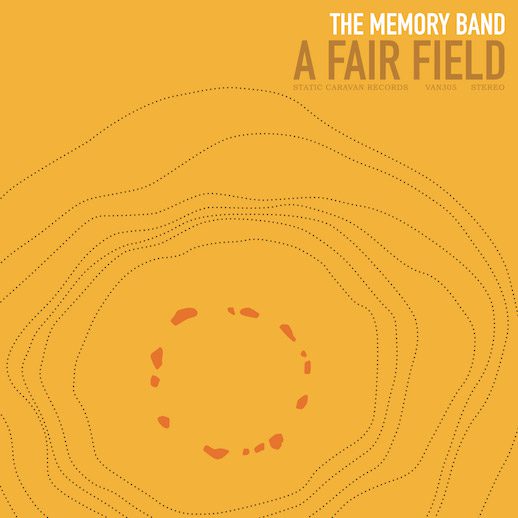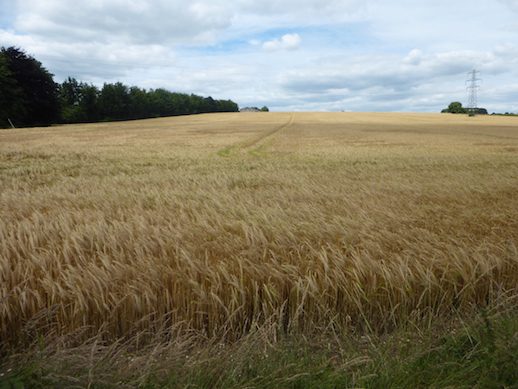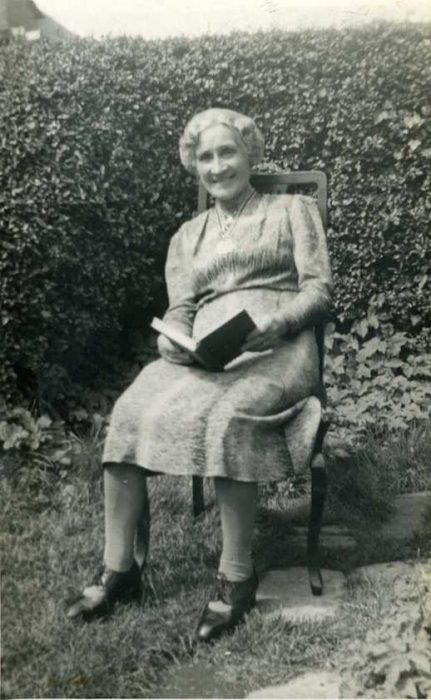Memory Band founder-member Stephen Cracknell visits the landscape which provided the inspiration for their new LP, A Fair Field:
A train to Salisbury, then off into the countryside on a bicycle.
‘The Romans, indeed, habitually travelled from Old Sarum to Dorchester via the vale of Chalk. But no modern traveller, save, perhaps, a stray commercial one, or some wight abandoned to archaeology, ever follows, nowadays, the gentle currents of the Ebele to their infant springs. I had a mind, however, to traverse this most sequestered of Wiltshire vales, not merely because such places as lie away from the stream of life have a quality of their own, but also because it was much the nearest way to Cranborne Chase, which I was curious to see, if only for all that I had read and heard of its story in bygone times.’ A.G. Bradley – Round About Wiltshire
First stop, the recreation ground at the edge of the village of Bishopstone. In 1844 a man called Henry Wright was born in this parish and over a hundred years later a tale would be told of him into a tape recorder. The recording is why I am here, cycling through the Chalke Valley in Wiltshire. Most Victorian and Edwardian travel writers and historians made reference to this landscape being the fabled location of The Countess Of Pembroke’s Arcadia, as detailed by the Antiquarian John Aubrey’s description of Sir Philip Sidney in his Brief Lives:
‘He lived much in these parts, and the most masterly touches of his pastorals he wrote here upon the spot where they were conceived. ‘Twas about these purlieus that the muses were wont to appear to him, and where he wrote down their dictates in his tablebook.’
The hedgerows teem with birdsong and swallows swoop over the hedges beside me, proclaiming the way forward as I ride. At Broadchalke, egrets gathered near the bridge where the Ebble meets the Chalke stream, which I follow up through a steep combe – at the top of which lies Cranborne Chase.
From the top, a gently sloping road winds slowly into the chase and takes me towards the village of Handley. In 1954 Peter Kennedy made his last stop of the day here to record the voice of a woman named Vashti Vincent. You can listen to the clip in its entirety at the British Library Sound Archive.
Our new album A Fair Field begins with a short spoken word extract from that recording. Mrs Vincent was then living in Handley in Dorset and before singing a version of the murder ballad “Fanny Adams” she tells Kennedy how her father bought the song from a ballad seller at Wilton Fair.
In the churchyard at Handley I met a man from South-East London who, having spent his life working for the council in the parks department, had retired to Handley and now tended the grass in the churchyard. He told me of the great fire in 1792 which destroyed the village and became a huge national story, and of how in the old days of the chase the village was famous for deer-poaching. Afterwards I took the road back the way I had come, gradually ascending out of the chase. I stopped at Garston Wood, now the site of an RSPB reserve. Buzzards circled above it and as I approached my turning, a blur of red and blue darted in front of my eyes as a bullfinch flew back into the wood. All day the birdsong had been tumultuous and entering the wood I stopped to make the following recording:
At the top of the chase I looked out again across the valley towards Wilton before descending through the villages of Bowerchalke and Broadchalke. According to the census of 1851, somewhere between these two villages lived a labourer named Thomas Stevens and his wife Mary Ann. With them, listed as being their guest, was a young girl called Mary Ann Ditchman who was born in Princes Street, just off Hanover Square in London in 1844. In 1852 she was baptised at Broad Chalke and from then on in all public records is listed as being adopted daughter of the Stevens, as later is her younger brother Thomas. Mary Ann goes on to marry a plasterer from nearby Shaftesbury called John Wilmott, have eleven children and eventually the family migrate to Reading in Berkshire. I know little more about her beyond these plain facts, except for the fact that Mary Ann Ditchman was my great-great grandmother.
As I cycled back down through the Chalke Valley I found a house by the road with a blue plaque just visible over the garden wall, the former home of writer William Golding. I could hear children laughing and playing the other side of the wall as I peered over and read the inscription.
“Ebble Thatch
Sir William Golding
Noble Laureate 1911-1993
Author of Lord Of The Flies
Lived here in 1940
and from 1958-1985”
I rode over the downs to Wilton as darkness slowly descended. Not stopping, I turned South-West and rode back towards Salisbury. The spire of the cathedral came into view once more and I thought of Jocelin from Golding’s book The Spire:
‘He shook his head in rueful wonder at the solid sunlight. If it were not for that Abel’s pillar, he thought, I would take the important level of light to be a true dimension, and so believe that my stone ship lay aground on her side; and he smiled a little, to think how the mind touches all things with law, yet deceives itself as easily as a child. Facing that barricade of wood and canvas at the other end of the nave, now that the candles have gone from the side altars, I could think this was some sort of pagan temple; and those two men posed so centrally in the sundust with their crows… the priests of some outlandish rite.’
*
A Fair Field is out now on Static Caravan. Buy a copy here.
Stephen Cracknell / Memory Band on Caught by the River / on Twitter


